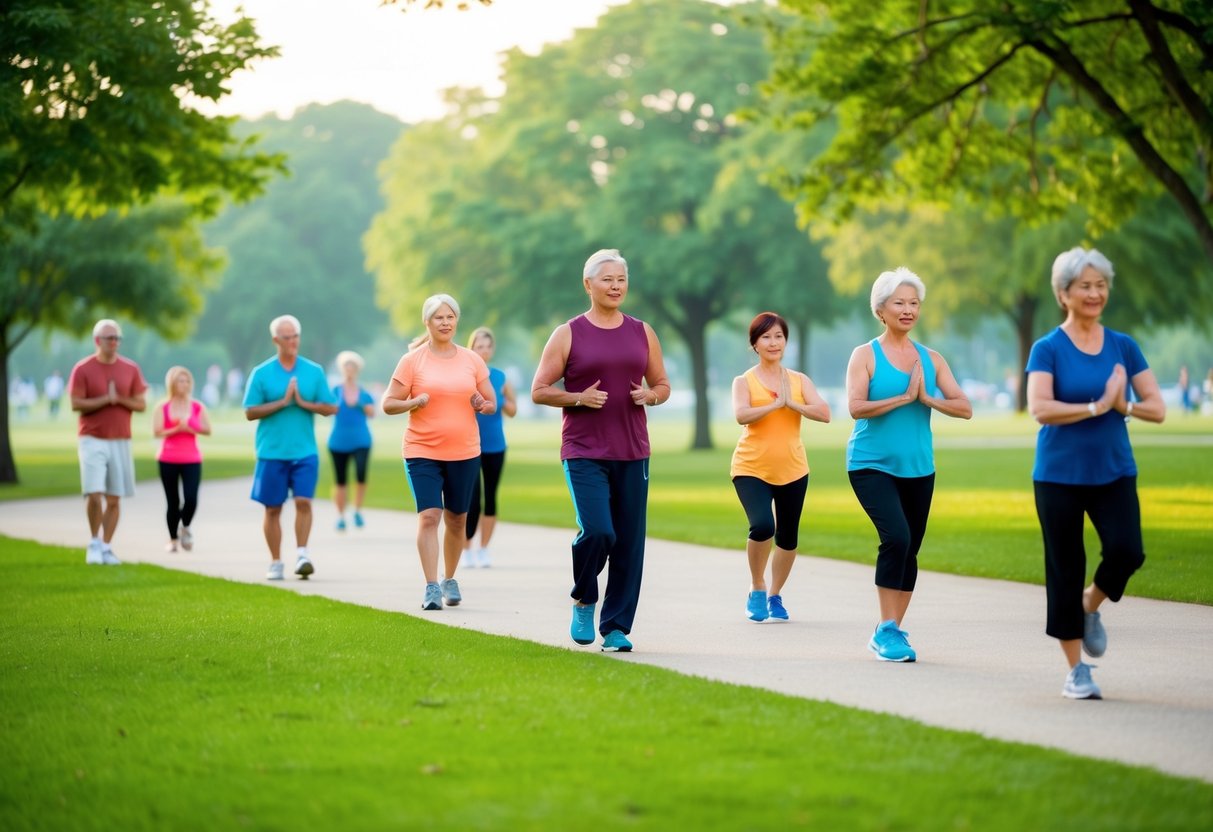
Staying Safe and Preventing Injury
Low-impact exercises offer a way to stay active while minimizing injury risks. It’s crucial to understand joint-friendly techniques and factors that can help reduce injury risks.
Low-Impact Techniques for Joint Safety
Engaging in low-impact exercises can be beneficial for joint health. They place less strain on the body, which is particularly advantageous for individuals with joint concerns. Activities such as swimming and cycling are joint-friendly options. These exercises support cardiovascular health while reducing pressure on the knees, hips, and ankles.
Proper form and posture play a vital role in protecting joints. Incorporating dynamic stretches into a warm-up routine prepares the body and helps prevent injury. Using equipment like resistance bands can provide support and control during movements, ensuring safety. Attention to alignment and controlled motions promote joint stability, which further protects against the risk of injury.
Factors in Reducing Injury Risk
Several factors can help minimize injuries when participating in low-impact exercises. Listening to one’s body is essential; recognizing signs of fatigue or discomfort allows for timely adjustments. Gradually increasing intensity provides the muscles and joints time to adapt, decreasing injury risks.
Recovery between sessions is crucial. Appropriate rest supports muscle repair and reduces recovery time. Wearing suitable footwear offers adequate support and cushioning, protecting the feet and lower limbs. Additionally, incorporating a balanced diet enhances energy levels and supports tissue repair, aiding in overall injury prevention.
Creating a Sustainable Low-Impact Fitness Routine
Developing a low-impact fitness routine involves mental and physical benefits that enhance well-being, along with strategies to maintain consistency, particularly with home workouts. This approach promotes sustained engagement in a fitness journey.
Mental and Physical Benefits
Low-impact exercises often provide substantial advantages for both the mind and body. They tend to be gentle on the joints, which makes them accessible to a wider range of people and minimizes the risk of injuries. Activities like walking, cycling on a stationary bike, or swimming promote cardiovascular fitness without placing excessive stress on the body. Enhanced mental health is another benefit, as these activities can alleviate stress and improve mood by releasing endorphins. Participation in low-impact exercises regularly leads to a more relaxed state of mind and increased energy levels.
These activities support mental clarity. Practicing such exercises along with mindful breathing offers stress relief and can ease symptoms of anxiety. The inclusive nature of these workouts ensures that people from different fitness levels can enjoy them, making the adaptation of this routine sustainable and beneficial for everyone involved.
Long-Term Strategies for Home Workouts
To maintain consistency with a low-impact fitness routine, especially at home, it is important to establish a set routine. Setting a specific time every day for workouts can enhance commitment. Mixing various exercises, such as yoga, Pilates, and light aerobics, can keep routines fresh and engaging.
Home workouts eliminate the need for a gym, which can save time and make adherence more likely. Investing in basic equipment like resistance bands or small weights adds variety while not taking up much space. Virtual classes or instructional videos provide guidance and motivation without leaving home, helping build a sustainable routine. This flexibility in planning ensures the integration of fitness into daily life, making workouts less of a chore and more of a habit that fits seamlessly into everyday routines.



